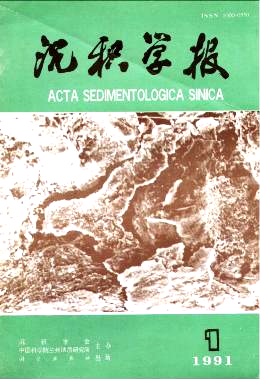The Sedimentollgy and Origin of Early Sinian Manganese Deposits form the Datangpo Formation, South China
- Received Date: 1988-11-24
- Publish Date: 1991-03-10
Abstract: Early Sinian black manganese carbonate deposits of the Datangpo formation are distributed in eastern Guizhou and western Hunan Provincce. The formation comprises a belt which extending for 200 km along depositional strike and 40 km perpendicular to the strike. The manganese precipitation is located in an extension in the passive continental margin of the Yangtze plate. The Datanpo formation is interbedded between two sequences that have been interpreted sa glacial diamictites. The formation comprises manganese ore and Mn- rich shale which show fine. graded laminations, with A-B-C, A-B-E Bourna sequences. The Mn-rich shale contains algae and fungi and acritarchs as reported previously; but the radiolaria have been found for the first time, and the radiolaria from Early Sinian has not been reported in the world. These features suggest that the deposition in a relatively deep water marine setting under conditions of anoxia which could have been caused by melting and a sea-level rise. The manganese ore bodies comprise lens and pillow-shaped structure which show a structure of successive concentric layer, and are cut by many fine baritite veinlets. Particularly, veinlets are concentrated in individual layer, and usually terminated at layer boundaries. This indicates that veins filled the fissures of shrinkage which was produced during the manganese ore cooling and separating phases. It is suggested that the manganese originates from hydrothermal exhalation and extrusion at the sea floor. It is precipitated as the successive concentric layers around a nucleus, thus building- up a pillow-shaped body. The δ34S signature (average 48. 3‰) of the manganese ore is typical of a hydrothermal origin. We suggest that glacial melting at the begining of Dagangpo formation brought about a major sea-level rise and the resulting transgression established a relatively deep marine environment. Hydrothemal exhalattion at the sea bottom could have resulted in a divsion of the sea water column with anoxic bottom water conditions and Precipitated the syngenetic manganese deposits.
| Citation: | Xu Xiaosong, Huang Huiqiong, Liu Baojun, Wang Yangeng. The Sedimentollgy and Origin of Early Sinian Manganese Deposits form the Datangpo Formation, South China[J]. Acta Sedimentologica Sinica, 1991, 9(1): 63-72. |






 DownLoad:
DownLoad: